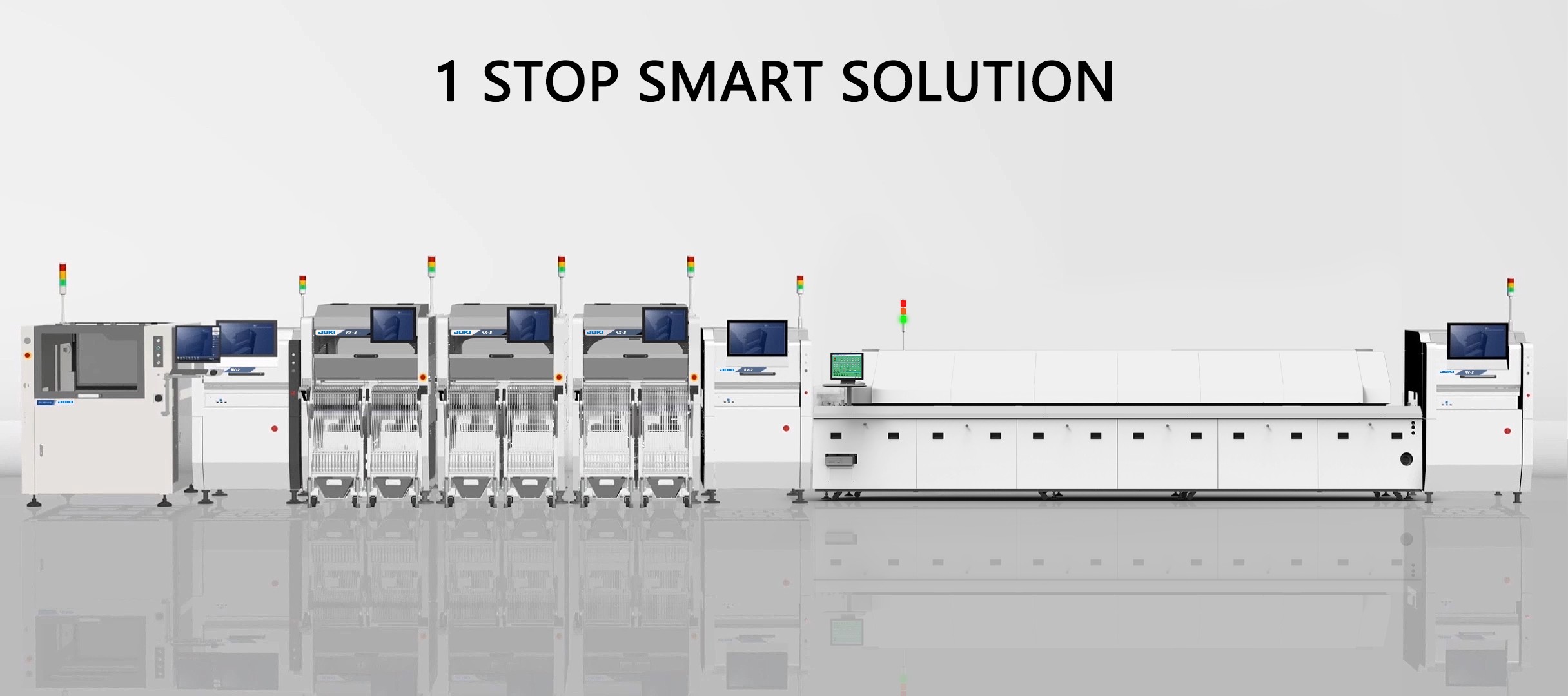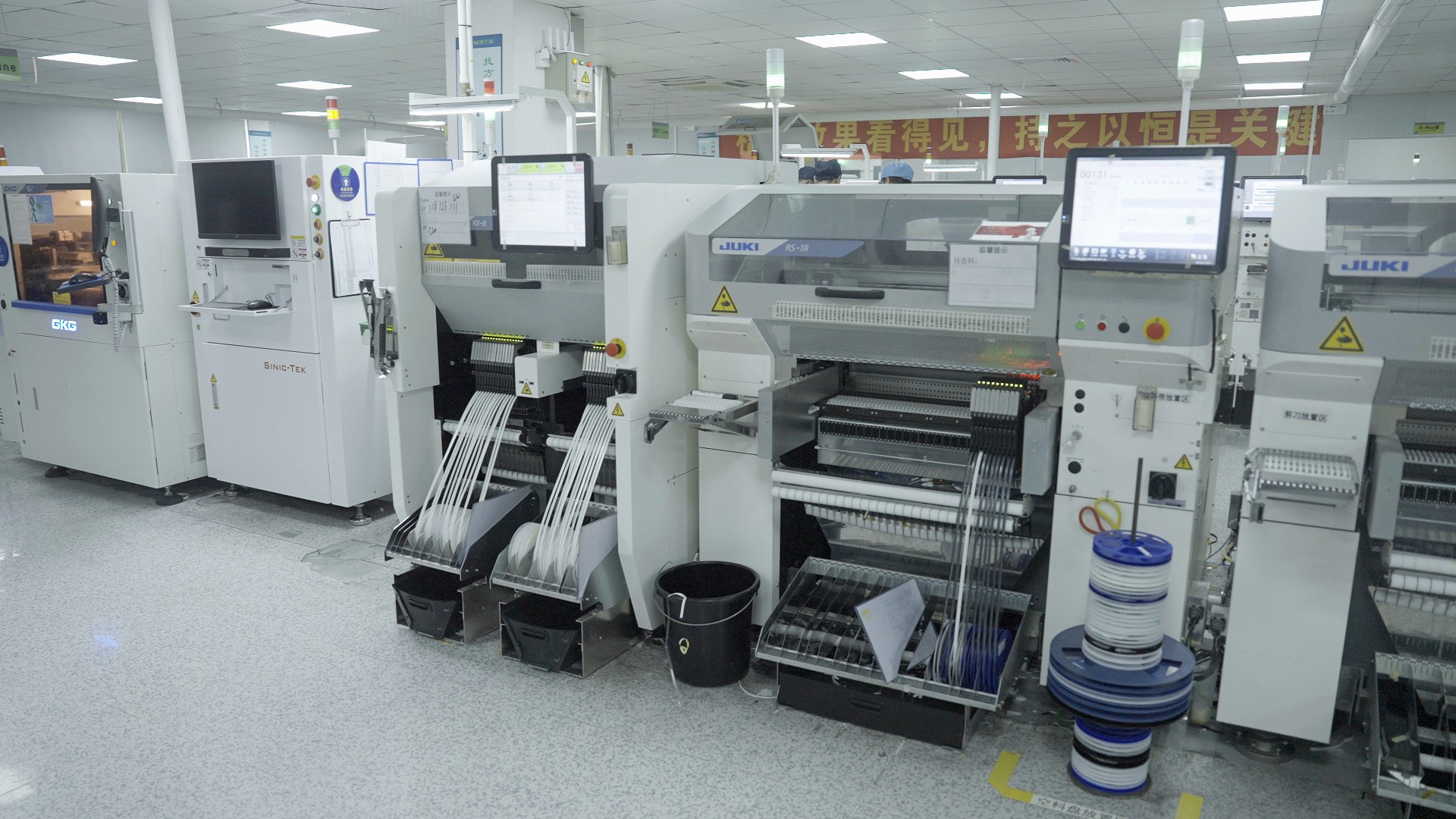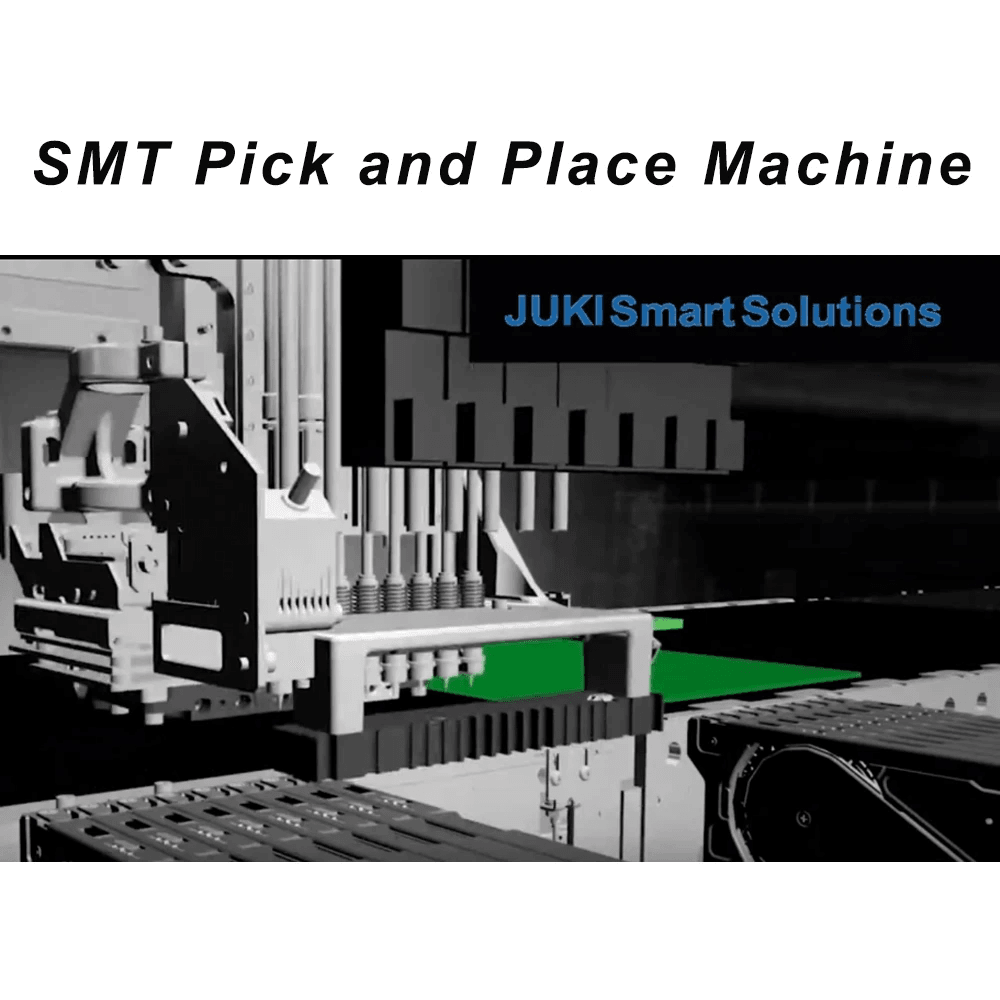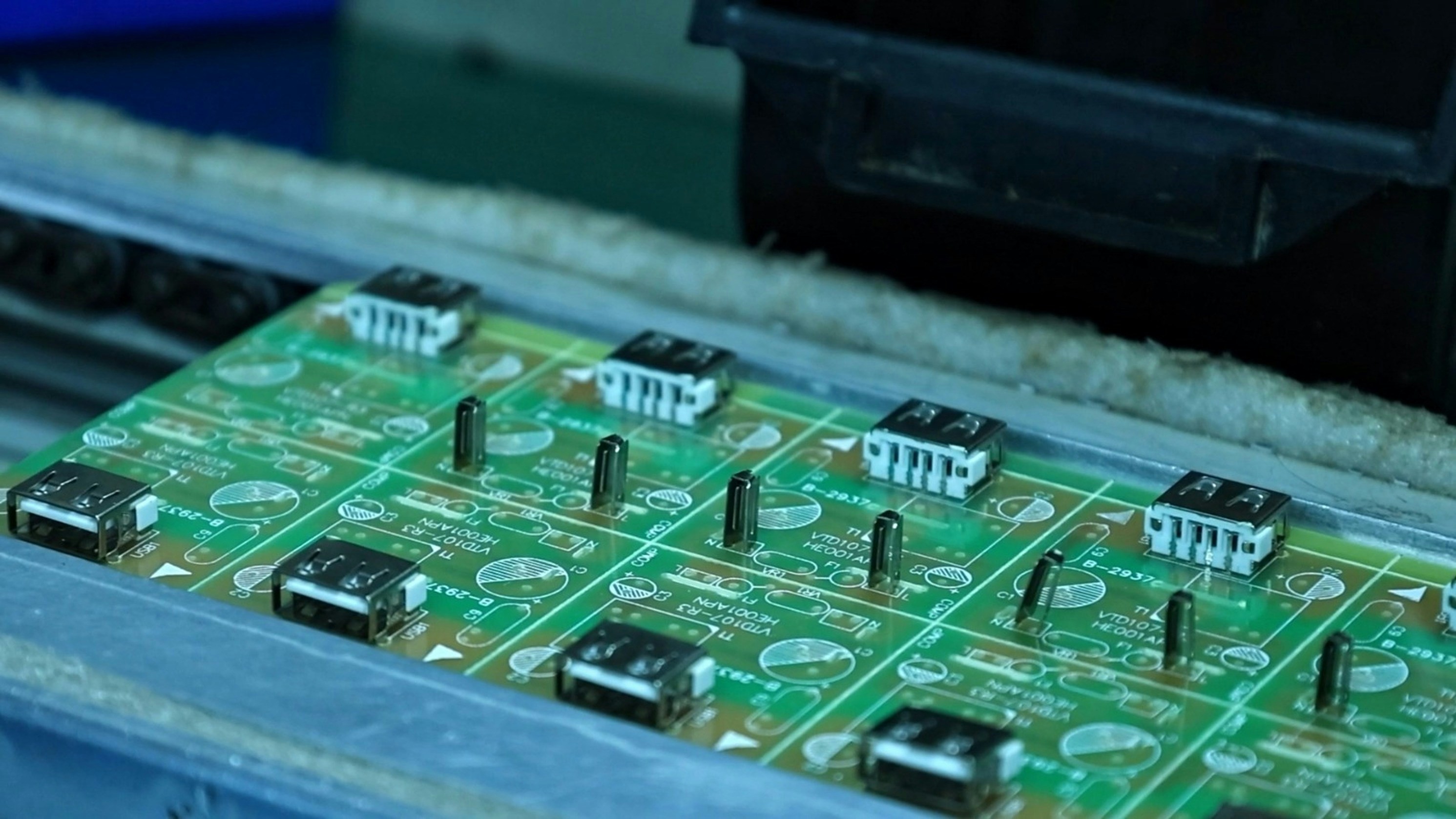Introduction

In the ever-evolving world of electronics, SMT machines have emerged as game-changers, revolutionizing the way circuit card assembly is conducted. These sophisticated devices allow for the precise placement of electronic components on a printed circuit assembly (PCA) board, streamlining production processes and enhancing overall efficiency. As industries increasingly rely on automated solutions, understanding the role of SMT machines in PCB assembly becomes crucial for manufacturers aiming to stay competitive.
The Rise of SMT Machines
The rise of SMT machines can be attributed to their ability to handle surface mount devices (SMDs) with remarkable speed and accuracy. Unlike traditional methods that require drilling holes into circuit boards, these advanced machines place components directly onto the surface of a PCB assembly board, minimizing space and maximizing performance. This shift not only reduces manufacturing costs but also significantly increases production output, making SMT technology an indispensable asset in modern electronics manufacturing.
Understanding Printed Circuit Board Assembly
Printed circuit board assembly is a vital process that involves connecting various electronic components to form functional devices. It serves as the backbone for nearly all electronic devices we use today, from smartphones to complex industrial machinery. By comprehensively understanding how these assemblies work and their importance in delivering reliable performance, manufacturers can better appreciate how SMT machines enhance this critical process.
Benefits of Automated PCB Assembly
Automated PCB assembly offers numerous benefits that extend beyond mere efficiency gains; it enhances quality control and consistency across production runs. With SMT machines meticulously placing each component on the PCB assembly board, the likelihood of human error is drastically reduced, resulting in fewer defects and higher reliability in electronic products. Additionally, automation allows for faster turnaround times and scalability in production capacity—key factors that help businesses meet increasing market demands while maintaining cost-effectiveness.
Overview of SMT Machines

In the realm of modern electronics, SMT machines play a pivotal role in enhancing the efficiency and precision of printed circuit assembly. These sophisticated devices are designed to automate the process of placing surface mount devices onto circuit board substrates, ensuring that electronic components are positioned accurately for optimal performance. As technology evolves, understanding the various types and brands of SMT machines becomes essential for anyone involved in circuit card assembly.
What Are SMT Machines
SMT machines, or Surface Mount Technology machines, are specialized equipment used to assemble electronic components onto printed circuit boards (PCBs). They streamline the process by allowing for high-speed placement of surface mount devices (SMDs), which are crucial for creating compact and efficient electronic devices. By automating tasks traditionally performed by hand, SMT machines significantly reduce assembly time while increasing accuracy and reliability in PCB assembly.
These machines come equipped with advanced features such as vision systems for component recognition and placement verification, ensuring that every electronic component is correctly positioned on the PCB assembly board. This precision is vital because even minor misalignments can lead to malfunctioning products or costly rework. In essence, SMT machines revolutionize how we approach circuit card assembly by marrying speed with accuracy.
Key Types of SMT Machines
When diving into the world of SMT machines, it's important to note that there are several key types tailored to different aspects of PCB assembly. The most common categories include pick-and-place machines, stencil printers, and reflow ovens. Pick-and-place machines excel at accurately positioning SMDs on a PCB; stencil printers apply solder paste precisely where components will be placed; while reflow ovens ensure that solder melts and solidifies correctly during the soldering process.
Each type serves a unique purpose within the broader context of printed circuit assembly but works together harmoniously to create reliable electronic devices. For instance, a pick-and-place machine may handle thousands of components per hour—far exceeding manual capabilities—while stencil printers guarantee that solder paste is applied uniformly across all pads on a PCB board. Understanding these distinctions helps manufacturers optimize their production lines for maximum efficiency.
Leading Brands in SMT Technology
The market for SMT technology is bustling with innovation from several leading brands recognized for their quality and reliability in manufacturing SMT machines. Companies like YAMAHA and ASM Assembly have established themselves as frontrunners by consistently delivering cutting-edge solutions tailored to meet evolving industry demands. Their commitment to research and development enables them to introduce new features such as enhanced automation capabilities and improved software interfaces.
Additionally, Bensun Technology has gained traction by offering versatile equipment designed specifically for small- to medium-sized enterprises looking to enhance their printed circuit assembly processes without breaking the bank. Each brand brings its own strengths to the table—YAMAHA excels in high-speed applications while ASM focuses on user-friendly interfaces that simplify operation across various skill levels in manufacturing teams. As competition heats up among these giants, advancements continue to shape how we approach circuit card assembly today.
The Importance of PCB Assembly

Printed circuit board (PCB) assembly is a critical process in the electronics industry, serving as the backbone for modern electronic devices. Circuit card assembly involves integrating various electronic components onto a PCB assembly board to create functional circuits. This intricate process not only ensures the proper functioning of devices but also plays a pivotal role in determining their reliability and performance.
Circuit Card Assembly Explained
Circuit card assembly is the method of mounting electronic components onto a printed circuit board, which serves as the foundation for electrical connections. This process typically employs SMT machines to facilitate the placement of surface mount devices (SMDs) with precision and speed. By utilizing advanced technology, manufacturers can achieve high-density layouts that optimize space on the PCB assembly board while enhancing overall functionality.
The integration of various electronic components during circuit card assembly requires meticulous planning and execution. Each component must be positioned accurately to ensure optimal electrical performance and signal integrity within the device. As such, mastering this intricate dance between components is essential for producing reliable electronic products that meet consumer demands.
Role of SMT in Electronic Devices
SMT machines have revolutionized how we assemble electronic devices by allowing for faster production times and greater accuracy than traditional through-hole methods. Surface mount technology enables manufacturers to place smaller components directly onto the surface of a PCB, reducing space requirements and improving design flexibility for circuit boards used in everything from smartphones to automotive systems. This compact design leads to lighter, more efficient devices that consume less power while delivering superior performance.
The role of SMT in electronic devices extends beyond mere convenience; it enhances functionality by enabling more complex designs that were previously unattainable with older technologies. Furthermore, as consumer expectations rise, manufacturers rely on SMT processes to deliver high-quality products that stand out in an increasingly competitive market. Ultimately, without SMT machines playing their part, today's cutting-edge electronics would not exist.
Ensuring Quality in PCB Assembly
Quality assurance is paramount when it comes to printed circuit assembly since even minor defects can lead to significant failures in electronic devices. Implementing rigorous testing protocols throughout the PCB assembly process helps identify potential issues early on—before they become costly problems down the line. By investing in reliable SMT machines equipped with advanced inspection capabilities, manufacturers can maintain high standards for quality control across their entire production line.
In addition to testing during production, continuous monitoring and feedback loops are essential for ensuring long-term quality in circuit card assemblies. Manufacturers must adapt quickly to changes in technology or consumer preferences while maintaining consistent quality across different product lines—an endeavor made easier through automation provided by modern SMT solutions. Ultimately, ensuring quality not only protects brand reputation but also fosters customer loyalty by delivering reliable products consistently.
Major Players in the Market

The landscape of SMT machines and PCB assembly is populated with several major players, each contributing to the evolution of circuit card assembly and printed circuit assembly. These companies not only manufacture equipment but also innovate solutions that enhance the efficiency and quality of electronic devices. Understanding their offerings can help businesses make informed decisions about which SMT machines best meet their production needs.
Bensun Technology's Offerings
Bensun Technology has carved a niche in the SMT machine market by providing advanced solutions tailored to modern manufacturing demands. Their range includes high-speed placement machines designed for surface mount devices (SMDs), ensuring precision in placing electronic components on a circuit board. With robust software integration, Bensun’s products facilitate seamless printed circuit assembly processes, enhancing overall productivity and reducing operational costs.
Comparing Top SMT Manufacturers
When it comes to choosing the right manufacturer for SMT machines, several key players stand out due to their innovative technologies and market presence. Companies like YAMAHA, ASM Assembly, and JUKI are often compared for their unique features in circuit card assembly capabilities, including speed, accuracy, and flexibility in handling various electronic components. Evaluating these manufacturers based on their technology advancements can help businesses pinpoint which equipment aligns best with their specific PCB assembly board requirements.
Innovations from YAMAHA and ASM Assembly
YAMAHA and ASM Assembly are at the forefront of innovations that redefine how SMT machines operate within the electronics manufacturing sector. YAMAHA’s latest models boast smart features that allow for real-time monitoring of production lines, significantly improving efficiency during printed circuit assembly tasks. Meanwhile, ASM Assembly continues to push boundaries with its modular systems designed for diverse applications in electronic devices—making it easier than ever to adapt to changing market demands while ensuring high-quality output across various types of surface mount devices.
Choosing the Right SMT Equipment

Selecting the right SMT machines for your printed circuit assembly is a pivotal decision that can significantly impact your production efficiency and product quality. With an array of options available, understanding what to prioritize can help streamline your circuit card assembly processes. This section will delve into essential factors, assess production needs, and weigh cost against efficiency to guide you in making an informed choice.
Factors to Consider
When choosing SMT machines, several factors come into play that can dictate the success of your PCB assembly board operations. First off, consider the types of electronic components you’ll be working with; different surface mount devices (SMDs) may require specific machine capabilities for optimal handling and placement accuracy. Additionally, think about the volume of production you anticipate—high-volume runs may necessitate more advanced equipment with faster placement speeds and greater flexibility to handle various circuit board designs.
Another important factor is the machine's compatibility with existing systems and software used in your production line. Seamless integration can save time and reduce errors during the printed circuit assembly process. Finally, don’t overlook after-sales support and service options offered by manufacturers; reliable support can make all the difference when issues arise or upgrades are needed.
Assessing Production Needs
Before investing in SMT equipment, it's crucial to assess your unique production needs thoroughly. Begin by analyzing current workflows: how many circuit boards do you produce daily? Understanding this will help determine whether a basic model suffices or if a high-end solution is warranted for increased throughput in electronic devices manufacturing.
Next, evaluate the complexity of your assemblies—are they simple designs or intricate multi-layered boards? More complex assemblies often demand advanced features like vision systems for precise component placement on PCB assembly boards, which could influence your choice significantly.
Lastly, consider future scalability; as market demands shift or grow over time, having adaptable SMT machines allows for easier upgrades without complete overhauls of your existing setup.
Cost vs. Efficiency
In any manufacturing environment, balancing cost against efficiency is critical when selecting SMT machines for printed circuit assembly tasks. While it may be tempting to go for lower-priced models to cut initial costs, consider how these choices might affect long-term productivity and quality control during circuit card assembly processes.
Investing in higher-end equipment often translates into better precision with surface mount devices and reduced rework rates due to fewer defects on finished products—saving money in labor costs down the line. Additionally, efficient machines typically offer faster cycle times which can enhance overall throughput without sacrificing quality.
Ultimately, remember that every dollar spent should contribute positively toward enhancing efficiency within electronic manufacturing operations; sometimes spending more upfront pays off significantly in terms of reliability and performance over time.
Future Trends in PCB Assembly
The landscape of printed circuit board (PCB) assembly is rapidly evolving, driven by advancements in technology and the increasing demand for efficiency. As electronic devices become more complex, the need for sophisticated SMT machines that enhance automation and smart manufacturing processes is paramount. This section delves into these future trends, focusing on automation, sustainability, and the role of artificial intelligence in circuit card assembly.
Automation and Smart Manufacturing
Automation has become a cornerstone of modern PCB assembly, particularly with the rise of SMT machines designed to streamline production processes. These machines not only increase speed but also improve accuracy when placing electronic components on a PCB assembly board. The integration of smart manufacturing principles means that manufacturers can monitor production in real-time, allowing for immediate adjustments to enhance efficiency and reduce waste.
The trend towards automation also extends to the use of collaborative robots (cobots) that work alongside human operators in circuit card assembly environments. By automating repetitive tasks, businesses can free up skilled workers to focus on more complex challenges, ultimately leading to higher quality products. As manufacturers continue to embrace these technologies, we can expect significant improvements in productivity across the industry.
Sustainability in SMT Processes
Sustainability is becoming increasingly important within the electronics sector as consumers demand environmentally friendly practices from manufacturers. SMT processes are adapting by incorporating eco-friendly materials and reducing waste during printed circuit assembly operations. By optimizing resource use and minimizing hazardous materials in electronic components, companies can contribute positively to environmental conservation efforts.
Additionally, many leading brands are investing in energy-efficient SMT machines that consume less power while maintaining high performance levels during circuit board production. The shift towards sustainable practices not only meets regulatory requirements but also appeals to a growing market segment that prioritizes green technology. As a result, integrating sustainability into PCB assembly processes will likely become a competitive advantage for manufacturers moving forward.
The Role of AI in SMT Technology
Artificial intelligence (AI) is poised to revolutionize PCB assembly by enhancing decision-making processes and predictive maintenance for SMT machines. With AI algorithms analyzing data from production lines, manufacturers can identify inefficiencies or potential failures before they occur—saving time and resources while ensuring high-quality outputs for electronic devices. This proactive approach allows companies to maintain optimal performance levels throughout their circuit card assembly operations.
Moreover, AI-driven systems can optimize placement strategies for surface mount devices (SMDs), improving accuracy during automated soldering processes on PCB assembly boards. By leveraging machine learning capabilities, these systems adapt over time based on historical data and real-time feedback from production environments—a game changer for manufacturers seeking precision and reliability at scale. As AI continues to evolve within this sector, its impact on SMT technology will be profound.
Conclusion
In the rapidly evolving world of electronics, investing in SMT machines is not just a trend; it's a necessity for businesses aiming to stay competitive. These machines streamline the circuit card assembly process, ensuring precision and efficiency in printed circuit assembly. By integrating advanced technology into their production lines, manufacturers can enhance their output while reducing errors associated with manual assembly.
Why Invest in SMT Machines
The rationale behind investing in SMT machines lies primarily in their ability to optimize production processes. With the growing complexity of electronic devices and the miniaturization of components, SMT technology enables manufacturers to efficiently place surface mount devices on PCB assembly boards with unparalleled accuracy. This not only reduces labor costs but also significantly shortens production cycles, allowing companies to meet market demands swiftly.
The Future of Circuit Board Assembly
Looking ahead, the future of circuit board assembly is poised for remarkable transformation driven by innovation and technological advancements. As electronic components become increasingly sophisticated, so too will the capabilities of SMT machines evolve to accommodate these changes. Enhanced automation and smart manufacturing will likely dominate the landscape, making it essential for companies to adapt or risk obsolescence.
Enhancing Efficiency in Electronic Manufacturing
To enhance efficiency in electronic manufacturing, businesses must prioritize integrating cutting-edge SMT technology into their operations. By leveraging automated systems for printed circuit assembly, manufacturers can minimize waste and maximize productivity while maintaining high-quality standards across all products. Ultimately, embracing these advancements not only streamlines processes but also positions organizations favorably within an ever-competitive marketplace.
